When observing the diverse world of lizards, one can’t help but be amazed at their ability to climb. Many species effortlessly ascend trees and vegetation, while others even master the art of navigating smooth glass. Their sticky and textured toes make them incredibly adaptable climbers, showcasing an impressive aspect of their biology.
However, when it comes to leopard geckos, these lizards are not as famous for climbing as some of their kin. While they possess the innate ability to climb, they’re often seen falling due to their preference for fair surfaces. Their toes, unlike those of other gecko species, are not designed for climbing smooth or vertical surfaces. Instead, leopard geckos thrive on the ground, where they can effectively use their tiny, sharp claws to navigate across small rocks and rocky terrain.
Now, addressing the question: Do leopard geckos climb?
As terrestrial lizards, they are not naturally inclined to scale tall trees. However, they do exhibit a degree of climbing and scaling abilities, especially in environments that offer them safe and suitable structures. In the wild, such enrichment and fun activities are essential for their well-being. In captivity, providing captive leos with opportunities to climb on rocks or low structures can mimic their natural behaviour, offering both physical exercise and mental stimulation.
In comparison to their climbing cousins like the crested gecko, leopard geckos are more ground-oriented. They excel in navigating their natural desert habitat, which is more about traversing the rocky terrain than climbing high. Understanding this difference helps in addressing the common misconception that all geckos, including Leos, are adept climbers. In reality, their climbing abilities are quite limited and should be considered when setting up their habitat to avoid injuries.
Table of Contents
Do Leopard Geckos Climb?
It can be hard to figure out exactly how leopard geckos feel about certain activities, especially when it comes to their interaction with their environment. When introducing elements from their natural habitat into captivity, the goal is to keep them entertained, active, and engaged.
Climbing rocks and simulating the hunting process in their enclosure can be particularly enjoyable for them, as it taps into their natural instincts. However, it’s important to note that what might seem like an adventurous climb could sometimes confuse an escape attempt, indicating that they might not be as comfortable with the setup as initially thought.
Providing a habitat that replicates their natural environment is crucial for their well-being. Leopard geckos, being ground-dwellers, often prefer activities that involve more horizontal movement and exploration. While they may engage in some climbing, it’s usually not their primary instinct. Instead, they revel in activities that involve burrowing or manoeuvring through low-level terrain.
Understanding these preferences is key to ensuring that your leopard gecko is not just active but genuinely thriving in its habitat, enjoying every aspect of its enclosure designed to mimic the wild.
Leopard Geckos (And Their Toes) Evolved For A Very Specific Type Of Climbing
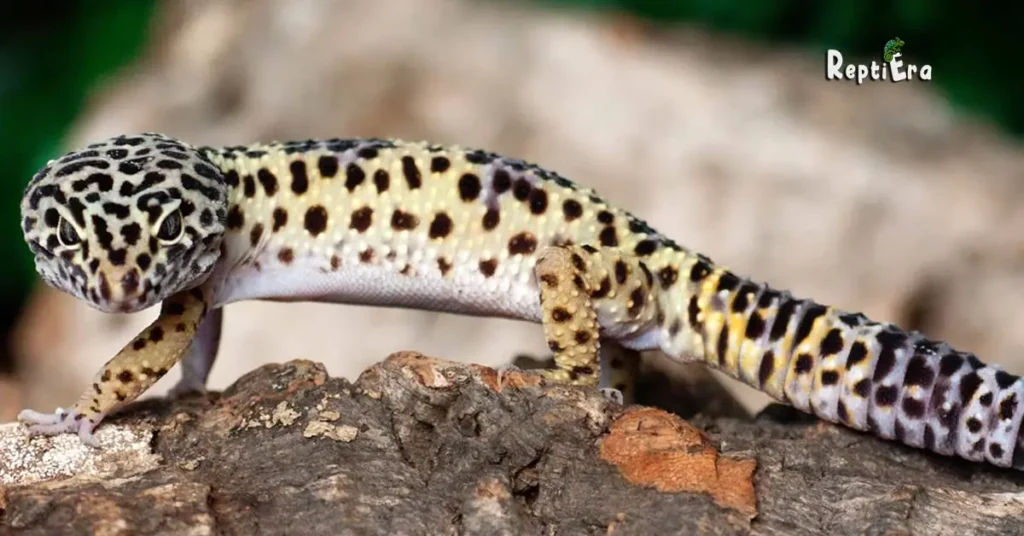
Leopard geckos, unlike their arboreal counterparts, possess a specific set of skills that enable them to climb effectively, but their terrain of choice is more grounded. They excel in navigating across rocks and low trees, demonstrating a stark difference from expert climbing lizards.
The secret lies in their toes. Unlike Crested geckos, which have sticky feet as a result of complex adaptation to stick to almost any surface with pure sticking power, leopard geckos’ toes are designed for a different purpose. They spread and lock onto surfaces like rock, making them adept at a unique strategy of climbing, suited to their desert origins.
These geckos don’t need the high-flying abilities of some other geckos due to their desert origins. Sticky toes are less useful in environments filled with dirt and hard clay that are constantly shifting. Instead, their claws serve as efficient tools for the job at hand.
Their climbing approach is more about stability and safety rather than the flashy vertical ascents of their sticky-footed relatives. This evolutionary path highlights the adaptability of geckos as a whole, each species fine-tuned to its unique environment and survival strategy.
How can we give them the chance to climb in their habitats?
Can leopard geckos climb? Yes, but their climbing style is different from what we might expect. Unlike most geckos with toes that have a sticky property allowing them to stick and scale walls, leopard geckos lack this amazing gift. Their claws are more adapted for terrestrial movement than vertical escapes from predators. Although they don’t possess the sticky toe pads that make other geckos good climbers on vertical surfaces, they can still navigate smaller structures in their habitats effectively.
Let’s Talk About Gecko Feet
Geckos have a unique ability to stick to surfaces thanks to their bulbous toes, which are covered in setae – microscopic hairs that branch into even smaller bristles known as spatulae. These tiny structures contour perfectly to the walls and ceilings they climb, utilizing the van der Waals force – weak electric forces that attract the molecules in the gecko’s feet to those in the climbing surface.
This neutral nature of interaction allows geckos to adhere to a variety of surfaces, including those solidified from liquefied gasses, organic liquids, and solids. As these electrons in the hair molecules interact with those in the wall, an electromagnetic attraction is created, allowing your reptile buddy to defy gravity.
Researchers have studied how geckos can crawl so quickly and effectively. The secret lies in how their feet can bond and unbond rapidly as they run, covering several body lengths in a blink. However, trouble arises when translating this to Leopard geckos.
As Professor Alex Greaney from Oregon State University explains, the synergy between the hairs’ flexibility, angle, and extensibility is crucial. Leopard geckos lack these advanced toe features, making their climbing abilities more grounded and less suited for the vertical adventures of their gecko cousins.
Understanding This Phenomenon with Math
The power of math in understanding gecko adhesion is significant, as highlighted by Professor Greaney and his team. They developed a model to explain the forces at play when a gecko climbs walls. The angle of the setae is crucial for adhesion; at a perfect 90-degree angle, the setae align optimally with the surface, whereas oblique angles are less effective. This alignment allows for maximizing the surface area that can adhere to and support the gecko’s weight.
Furthermore, their findings illustrate how the setae are engineered to be super flexible, enabling geckos to hop from one surface to another and change direction swiftly, often to evade a predator. The toe hairs can absorb and redirect energy, benefiting from their stretchy nature and ultra-flexibility to move across surfaces.
However, there’s a caveat: excess moisture can reduce the stickiness of the gecko’s feet, leading to diminished adhesion and potential slip. This is where the gecko’s skill at balancing against gravity and utilizing its force comes into play. They must precisely press and slide their feet in the direction their body intends to move. This ability is vital for manoeuvring on various surfaces, preventing them from falling off. Leopard geckos, lacking these sophisticated toe structures, rely more on their claws and body strength to navigate their environment.
How To Introduce Climbing Opportunities For Your Leopard Gecko
For leopard gecko keepers looking to use the information for better care, adding opportunities for Leos to climb, crawl, and hide is essential. Integrating small rocks and multiple hiding spots can safely create diverse options for them to explore.
However, it’s important to keep in mind that leopard geckos, being terrestrial lizards, might not use tall structures as much as other species. Therefore, when designing their enclosure, focus on making it wider rather than too tall. Incorporating elements like rocks and logs can enhance the terrain to more closely resemble their natural habitat.
However, it’s crucial not to go overboard. Leopard geckos are ground-dwellers by nature, so they appreciate a setup that allows for ground-level exploration and hiding more than climbing. By adding elements that offer a mix of ground cover and low-level climbing options, you’re providing an environment that caters to their instincts and needs.
This approach ensures that your leopard gecko has a stimulating, engaging, and safe space to live, mirroring the diversity of terrain they would encounter in the wild.
So Why Not Leopard Geckos?
Leopard geckos are terrestrial reptiles; they are more attuned to the ground than climbing vertically. Unlike other species of geckos that climb to escape predators or drop their tails as a defence mechanism, leopard geckos have evolved in a different habitat that is more conducive to safe, ground-level living. Their ideal tank should be wide and long, rather than narrow and tall, to mirror Leo’s natural environment.
Owners often opt for a glass fish tank or aquarium to create a healthy habitat. However, these tanks with glass walls provide a surface that is not ideal for climbing. Wire mesh cages are also not recommended as they can lead to feet getting stuck and heat escaping from the cage.
Moreover, lids on leopard gecko enclosures are crucial for the safety of both the geckos and any kids or other pets in the home. They prevent harmful insects from entering and the geckos from escaping. A screen cover is often used to keep the air circulating, but solid lids can be more effective in maintaining temperature and humidity at safe levels.
It’s important to understand that while leopard geckos might attempt to climb out of their enclosures, their anatomy is not designed for such activities. As such, their habitats should be tailored to their ground-dwelling nature, ensuring their safety and well-being.
What Can I Put in The Tank for My Leo to Climb?
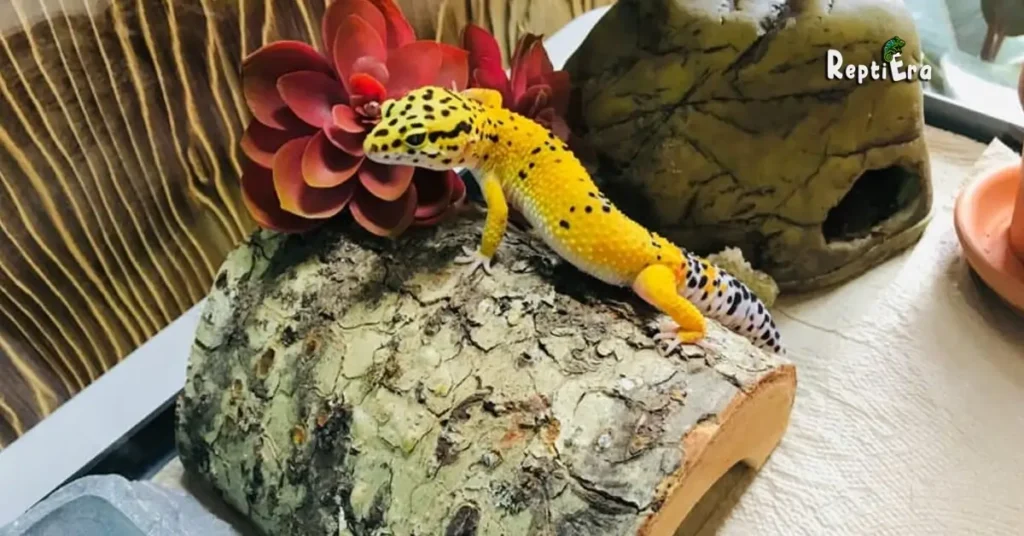
For Leos who enjoy climbing, adding rocks, sticks, small logs, and other objects like replica dinosaur skulls can create a dynamic environment in their tank. These items provide spaces to perch, play, and bask, similar to what they might experience outdoors.
However, it’s crucial to ensure these additions are sanitized. The process should be thorough, especially when introducing items like bark or wood, which might harbour parasites. Baking these items in the oven helps, as a period of 20-30 minutes at high temperatures can assist in surface cleaning and removing any remaining parasites.
For the gecko’s rocks and other tank objects, washing them with organic dish soap and paper towels is a good start. A solution of 90% water and 10% bleach, or using a reptile-safe spray, can effectively sanitize these items. After spraying with the bleach solution, it’s important to leave them for about 30 minutes and then rinse thoroughly to remove any fumes.
This is essential as any tank items with residual bleach or other chemicals can be harmful to the gecko. Always ensure that any pointy rock or similar items are safe and won’t injure the gecko.
Could There Be Other Reasons My Gecko Is Climbing?
We’ve learned that geckos of various types do climb, often looking to get away from predators or to explore new environments. For instance, leopard geckos are not the strongest climbers compared to other geckos, but they may try to climb the glass of their enclosure. This can be seen as normal behaviour, especially as they get used to their new home.
If you find that this does not stop, it’s crucial to evaluate their habitat to ensure it is comfortable and conducive to their well-being. It might be an indication that something in their environment isn’t quite right for them.
Another aspect to consider is whether keeping more than one leopard gecko in the same habitat is a good idea. Sometimes, the climbing behaviour could be the result of trying to get away from a tank mate, particularly if that mate is dominant or of the opposite gender and attempting to mate. These advances can cause stress and lead to increased climbing attempts as a form of escape.
Moreover, ensuring that the habitat is comfortable and provides a sense of security is essential for your gecko’s well-being. If a leopard gecko continues to climb excessively, it’s a sign that the environment may need to be re-evaluated for its comfort. This could involve adjusting the layout, adding more hides, or reassessing the temperature and humidity levels.
A comfortable and secure habitat not only reduces stress-induced behaviours like excessive climbing but also promotes overall health and happiness in your leopard gecko.
So, What Can I Do?
If you’re wondering what you can do to accommodate your Leopard Gecko’s climbing needs, it’s important to consider their environment carefully. If a tank mate is bothering them, it may be wise to separate them into different habitats or use a divider in the tank to provide more space. While it’s generally not advisable to keep multiple leopard geckos together, ensuring they have access to hides, cool zones, and warm spots is crucial.
Regularly check the temperatures on both the floor and in the air of the enclosure to ensure they’re not too hot or cold. Additionally, shutting off bright lights or covering the tank when necessary can create an environment in which Leos thrive, especially since they are more active at night and maybe stressed by super bright conditions.
Fun with Climbing
Introducing fun with climbing for your Leo can be a delightful way to bond and let them burn off energy. Start by letting your gecko climb onto your hand; you can sit on the floor to ensure safety. Their claws are perfect for gently grasping onto your shoulder and arm. As they explore, watch them closely to prevent any fall.
This not only strengthens your bond with your leopard gecko but also provides them with an opportunity to climb on an easy-to-grip surface. It’s a simple and safe way to engage with your Good pet, offering both physical exercise and mental stimulation, enhancing their overall well-being.
FAQs
Do leopard geckos need stuff to climb?
When considering whether Leopard geckos need items to climb, it’s important to understand their natural behaviour. While they don’t require extensive vertical space like some arboreal species, incorporating small rocks, logs, and branches in their enclosure is a good idea. These items not only allow them to crawl and explore but also provide crucial enrichment and exercise. By mimicking their natural environment, you create a more engaging and healthy habitat for your gecko.
Why does my leopard gecko climb?
In most cases, climbing is a normal behaviour for leopard geckos; they often enjoy manoeuvring over small rocks and branches in their environment. Sometimes, they might even associate climbing walls with bringing food, which can encourage this behaviour. However, if your leopard gecko is trying to climb the enclosure walls excessively, it might be a sign of stress or boredom. Providing a stimulating habitat with adequate climbing structures and hiding spots is crucial to their well-being and can alleviate these issues.
Can leopard geckos climb upside down?
Unlike some other geckos that have specialized, sticky toe pads, leopard geckos can’t climb upside down. This limitation is due to their lack of adhesive pads, which are essential for such feats. Although they are equipped with small, sharp claws, these are more suited for navigating horizontal or slightly inclined surfaces rather than defying gravity on the underside of objects. If a leopard gecko tries to test this ability, it can be stressful for the animal. Therefore, it’s important to provide an environment with the right surface types that cater to their climbing abilities without pushing them beyond their natural limits.
Can leopard geckos scale walls?
Leopard geckos, unlike crested geckos and other sticky-toed lizards, are not adept at scaling walls. Their anatomy, characterized by long toes and sharp claws, is more suited for environments where they can climb on rocky walls, branches, and other small items. While they might attempt to scale a vertical surface, it’s generally safer and more in line with their natural behaviour to have them climb rocks or similar structures in their habitat, which provides them with the physical activity they need without the risk associated with wall climbing.
Will My Leopard Gecko Climb Out of its Tank?
No, leopard geckos lack sticky toe pads like other geckos, and thus can’t stick to tank walls; however, if showing behaviours of wanting to climb, find the best substrate and accessories to facilitate natural exploration. Introduce textured trees, non-slip rocks, and other items they can comfortably hang onto within their enclosure, but they’re unlikely to climb high enough to escape the lid.
Is Glass Surfing a Sign of Stress or Discomfort?
The good news is that glass surfing in leopard geckos can be a sign of exploration rather than stress or discomfort. If your leopard gecko is climbing glass, it’s often normal behaviour, not a cause for worry, but it might be trying to get your attention or coerce you into giving more food.
Conclusion
Leopard geckos, known for their unique abilities, do climb, but they don’t excel in it like some other species. They enjoy travel and traversing over small rocks and logs, which is more reflective of their natural behaviour in the wild. While one might expect them to take advantage of extra vertical space, they’re not quite like the crested gecko in this aspect. However, adding climbing opportunities in their enclosure provides essential enrichment and exercise. When you think of leopard geckos, don’t expect them to show off dramatic climbing skills, but rather appreciate how they interact with rocks and other elements in their habitat.

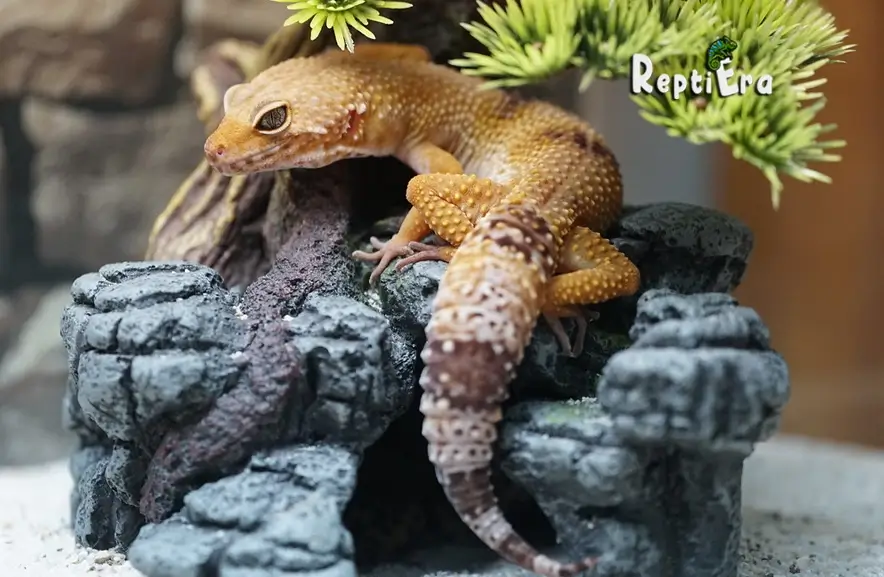
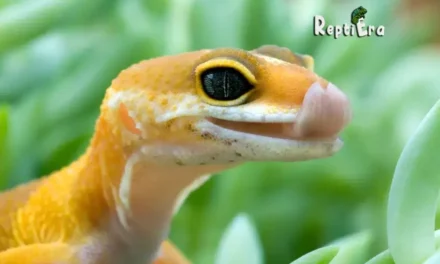
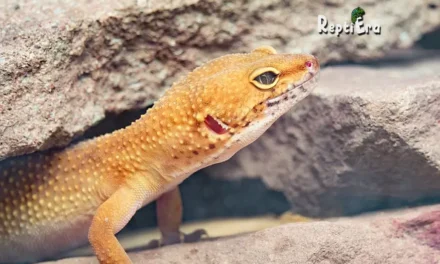
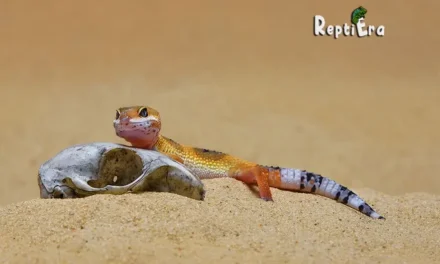
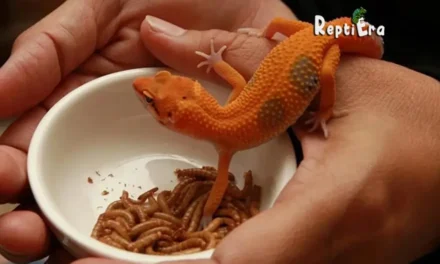
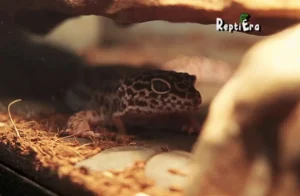

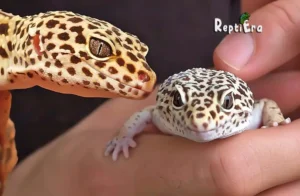
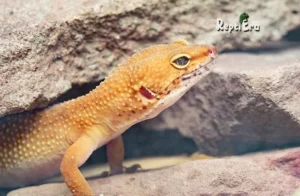
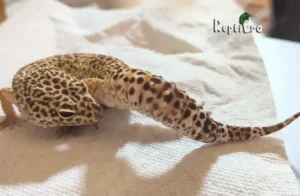
Your point of view caught my eye and was very interesting. Thanks. I have a question for you.